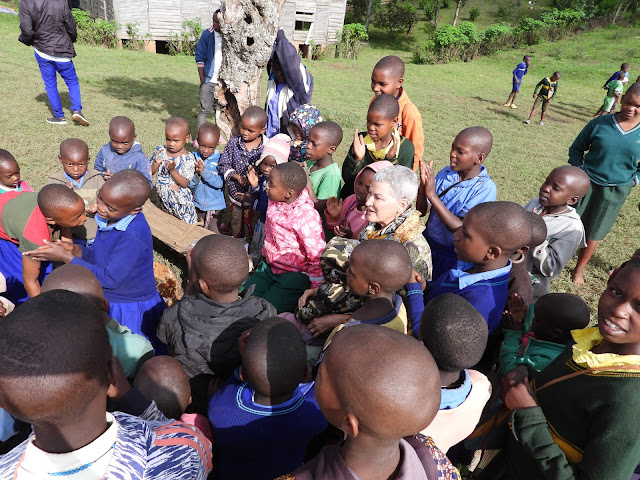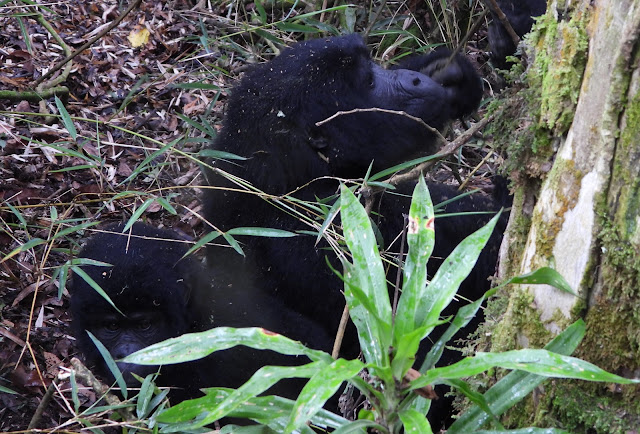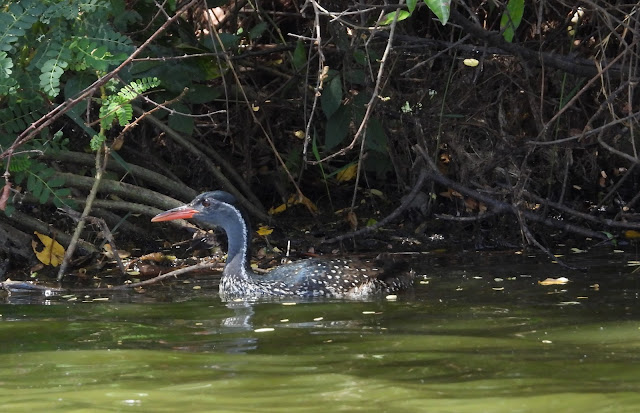As we entered the park after nightfall little game viewing was enjoyed however it was with some genuine excitement that our first Zebras were seen crossing our path! Other mammals would have to wait for the next day....
Lake
Mburo National Park is Uganda's smallest National Park and the one closest to Entebbe.
Lake
Mburo was originally gazetted in 1933 as a controlled hunting area and upgraded
to a game reserve in 1963. The region was settled by Banyankole Bahima
pastoralists who traditionally herd Ankole cattle, and still do. The residents
continued to graze their cattle in the reserve, a situation decried by western
conservationists, who termed them "invaders" in 1981, but were
expelled from their lands after it was upgraded to national park status in
1983, as hoped for by some in the West. The Obote government's upgrade decision
was intended, in part, to weaken the Banyankole, who supported anti-Obote
rebels. It came at the time of the Operation Bonanza massacre of 300,000 people
during the Ugandan Bush War. As the evicted pastoralists were not compensated
for lost grazing land or assisted with resettling, many remained hostile to the
upgrade. The rangeland outside the park was subsequently subdivided into small
ranges and subsistence farming plots.
In 1985,
the second Obote regime fell and the previous residents of Lake Mburo
re-occupied the park's land, expelling park staff, destroying infrastructure,
and killing wildlife. Less than half of the park's original land area was
eventually re-gazetted by the National Resistance Movement government in 1986.
Within
the park there are still culturally significant locations, such as Rubanga,
where sacrifices were once made to the gods, Ruroko is where the semi-mythical
Bachwezi lived, and Kigarama was where the pages (servants) of the king used to
stay.
The park
hosts zebra, hippopotamus, impala, warthog, common eland, African buffalo and
over 300 bird species. Predators may include the lion, leopard, hyenas, genets,
African civet, jackals and serval, and since 2015 there is a population of
Rothschild's giraffe.
The
protected area was considered a 'lion conservation unit' by the IUCN in
2005, despite lions no longer occurring here. Lions were eliminated by the
indigenous people in the 1980s, but there were reports in early 2015 of a
single lion roaming the areas of Miriti, Kashara, Warukiri and Rwonyo. Because
this was considered problematic by the local residents, a solution offered was
to translocate the lion to the zoo. At the same time, park management floated
the idea of reintroducing lions to the park. The lion roaming the area
eventually attacked and injured three people, causing a large crowd of the
enraged community to hound the animal with stones and sticks. The Uganda
Wildlife Authority made the decision to kill the animal, as the community was
angry and the situation had become dangerous. It is thought to have migrated
from Kagera Game Reserve in Tanzania.
A
problem facing grazers in the park are the changes in habitat occurring over
time. Most areas which were formerly grassland in the park have changed into
bushveld or forest as the invasive native shrubby tree species Acacia hockii
has colonised these areas. The acacia in turn is protecting other bush and tree
species, which are growing faster and thicker. This afforestation is forcing
animals into the surrounding ranches and private land, causing them to be
resented as pests. Uganda has tried to organise these areas into controlled
hunting areas for sport, but land owners complain the money this generates is
being spent on community projects such as schools, health centres and roads
rather than addressing individual challenges resulting from problem animals.
The procurement of an excavator for habitat management, different wildfire
regimes, fencing, translocating excess animals, wildlife ranching for the
hunting industry, community tourism, licensing more sport hunting companies and
increasing quotas may alleviate this; the local community is permitted to
uproot acacia for firewood, but this has proved ineffective. Hyenas and
bushbuck in particular are considered problem animals.
Wikipedia
 |
| Yellow billed Duck |
 |
| Common Waterbuck buck |
 |
| Black headed Heron |
 |
| Common Warthog |
 |
| Yellow billed Oxpecker |
 |
| Ruppell's Starling |
 |
| Ruppell's Starling |
 |
| Lesser Masked Weaver |
 |
a young Waterbuck buck
|
 |
| Ruppell's Griffon Vulture |
 |
| Senegal Lapwing - adult |
 |
| Senegal Lapwing - immature |
 |
| African Wattled Lapwing |
 |
| Lappet faced Vulture |
 |
| Yellow throated Longclaw |
 |
| Red necked Spurfowl |
Ken CrossAll pictures Ken Cross



































































